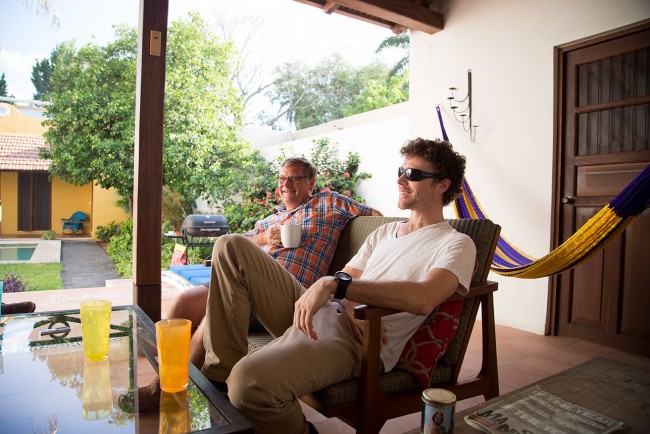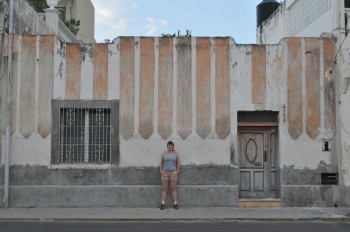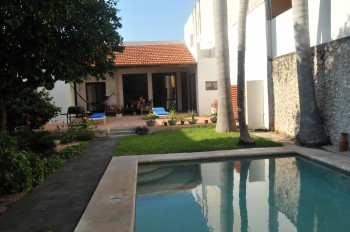Have Geophone, Will Travel – Geophysics On Call
May 12, 2016

When I’m not on the L/B Myrtle with the Chicxulub research team, I’m in Merida, Mexico, the capital of the Yucatan state. I found out on Monday that my neighbors in Merida include two Chicxulub expedition research scientists: Doug Schmitt, a researcher at the University of Alberta, and Chris Nixon, his graduate student.
While most other Chicxulub scientists live and work on the Myrtle, Schmitt and Nixon are kept “on call” to take borehole seismic readings. When the drill reaches a new section in the crater site that needs to be imaged, that’s when they come out.
Staying offshore helps save money and space on the Myrtle. And although Schmitt says he’d rather be watching the core come up, being on call has its perks.

For one, instead of sharing a six-man room in a boat miles away from shore, Schmitt and Chris are staying a centuries-old villa, complete with antique tile, ornamental stained glass, and a pool flanked by a garden and palm trees with green coconuts.
Staying offshore also means they have the opportunity to visit different parts of the Yucatan–Nixon has swam in cenotes found across towns near Merida. But no matter where they are, when the call comes to read the borehole, they go to the Myrtle immediately.
Research is a 24/7 job for the Chicxulub expedition with scientists divvying up duties over day and night shifts. A delay in reading the borehole means a delay in drilling, and the mission wants to collect as much core as possible.
However, if Schmitt and Nixon happen to arrive at night, they wait until dawn to start their work because borehole reading process can disturb sea turtles in the area, which are more active at night.
Reading the borehole involves recording information about how sound travels through the rock surrounding the hole. This is done by creating a loud noise at the water’s surface and detecting it from within the borehole. From this data, the scientists can extract information about the different rock layers and their characteristics. Knowing this helps locate different layers of the impact, as well as serves as a guide for the layers that should be represented in the core.
Taking the reading is a team effort between the Jackson School and the University of Alberta. The Jackson School’s seismic source system creates the

loud noise at the sea surface, and the University of Alberta’s geophone array–a device made up of 15 geophones on a thin 75-meter-long cable dropped into the borehole–detects the wave energy from inside the borehole after it has traveled through all the layers of rock between the sea and the device.
The high-demand for readings from the University of Alberta’s specialized geophone array has taken Schmitt to borehole sites across the world, including other craters. He says what sets Chicxulub apart from these other projects is the array of scientists from different disciplines that are studying the same site. He said he learns something new from the Chicxulub research team every day, whether it’s from the deck of the Myrtle or while working while on call in Merida.
